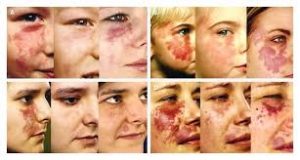
Laser dermatology is a treatment whose usage is mainly on treating skin conditions. Application of Argon and carbon dioxide lasers are common to treat benign vascular birthmarks.
In the last 20 years, progress in the laser technology has transformed their effectiveness in the treatment of many skin fitness and congenital deficiencies, including vascular and pigmented lesions, the removal of tattoos, scars, and wrinkles.
Laser light can precisely focus on small spots with very high energy. Mostly, using the spectrum of laser and light technologies for skin resurfacing and rejuvenation purpose happens.
How does Laser Dermatology work?
The laser light is generated from an optical cavity holding a medium, which can be gases like argon, krypton, carbon dioxide, liquids such as, dye or solids like ruby, neodymium: yttrium-aluminum-garnet, or even alexandrite.
The process means excitation of the molecules of the laser medium, which ends in the release of a photon of light as it returns to a steady position. Every medium exhibits a specific wavelength of light, which may be within the evident spectrum (violet 400 through to red 700nm) or infrared spectrum (more than 700 nm).
Basically, their aim is to destroy the target cells and not to harm the surrounding tissue.
- Treatment of skin conditions with lasers

Vascular lesions
Pulsed dye laser treatment
Pigmented lesions and tattoos
Laser Hair removal
Facial wrinkles, scars, and sun-damaged skin
Laser treatments are burns. Also, Laser treatment can also create adverse effects like temporary pain, redness, bruising, blistering, infection, and pigment change (brown and white marks)which can be permanent scarring.
Laser hair removal
The practice of Laser hair removal is a familiar cosmetic procedure these days. It beams highly concentrated light into hair follicles which absorb the light and destroys the hair. Most people opt it to remove unwanted hair from the face, leg, arm, underarm, bikini line, and other areas.
At first, your hair that will be undergoing treatment will be trimmed to a few millimeters above the skin surface. Then the laser equipment adjusting takes place according to the color, thickness, and location of your hair treatment as well as your skin color.
Following, the technician will transmit a pulse of light to the treatment region. Then, watch the area for several minutes for a patch test.
When the procedure hits completion, the dermatologist provides you with ice packs, anti-inflammatory creams or lotions, or cold water to ease out any discomfort.
Later you may schedule for your next treatment after four to six weeks and finish your hair removal process until the hair stops growing.
How much does the laser hair removal cost?
Laser dermatology is initially more expensive and cheaper in the long run. According to the American Society of Plastic Surgeons, the common cost for laser hair removal is 235 dollars per sitting. It is much cheaper than waxing or threading every month as this gives a permanent result.
Is laser dermatology good for your skin?
- So far laser treatment has shown to be safe, but in every removal, there is an estimated amount of danger. Hyperpigmentation or permanent darkening of the epidermis is a noticeable hazard for the darker-skinned. Also, an infection might transpire and the skin could respond negatively to the environment thus prompting grave deterioration.
